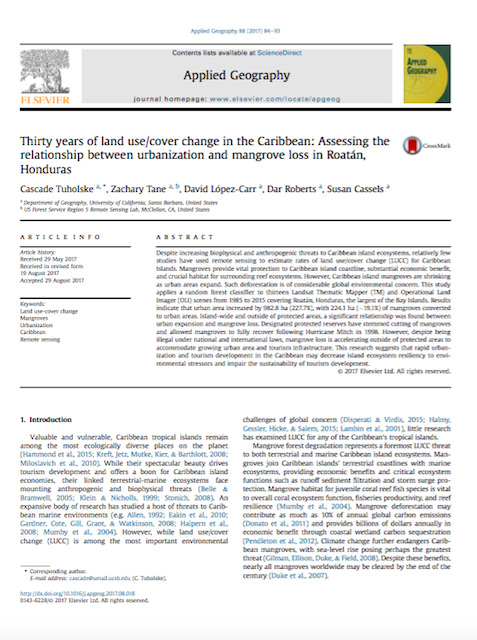Thirty years of land use/cover change in the Caribbean: Assessing the relationship between urbanization and mangrove loss in Roatán, Honduras

Abstract: Despite increasing biophysical and anthropogenic threats to Caribbean island ecosystems, relatively few studies have used remote sensing to estimate rates of land use/cover change (LUCC) for Caribbean Islands. Mangroves provide vital protection to Caribbean island coastline, substantial economic benefit, and crucial habitat for surrounding reef ecosystems. However, Caribbean island mangroves are shrinking as urban areas expand. Such deforestation is of considerable global environmental concern. This study applies a random forest classifier to thirteen Landsat Thematic Mapper (TM) and Operational Land Imager (OLI) scenes from 1985 to 2015 covering Roatán, Honduras, the largest of the Bay Islands. Results indicate that urban area increased by 982.8 ha (227.7%), with 224.1 ha (−19.1%) of mangroves converted to urban areas. Island-wide and outside of protected areas, a significant relationship was found between urban expansion and mangrove loss. Designated protected reserves have stemmed cutting of mangroves and allowed mangroves to fully recover following Hurricane Mitch in 1998. However, despite being illegal under national and international laws, mangrove loss is accelerating outside of protected areas to accommodate growing urban area and tourism infrastructure. This research suggests that rapid urbanization and tourism development in the Caribbean may decrease island ecosystem resiliency to environmental stressors and impair the sustainability of tourism development.
